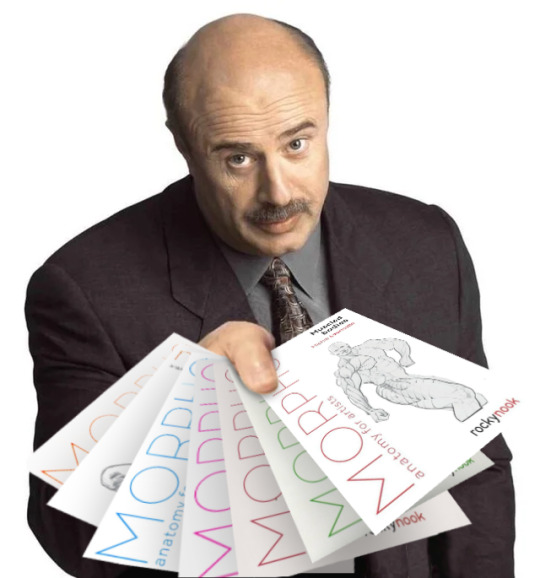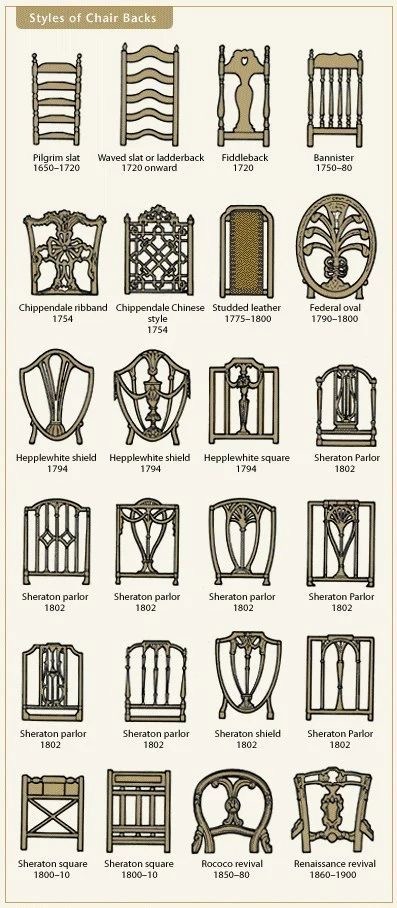Text
My animation process (in a GIF!)
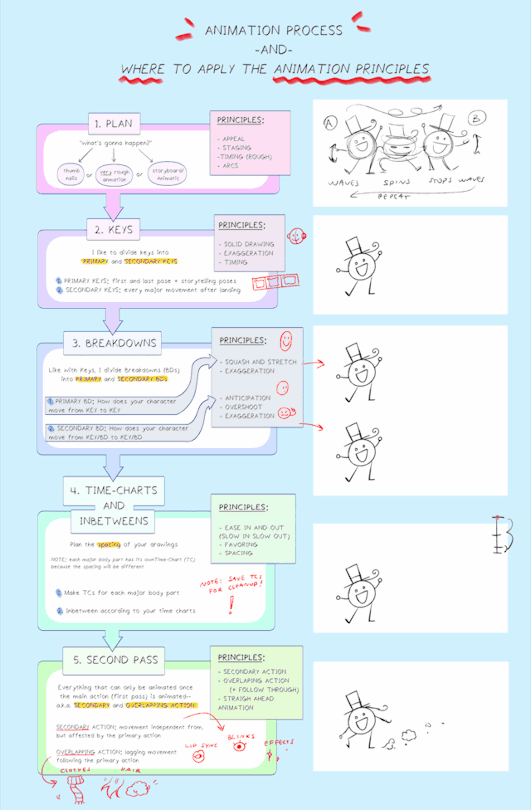
So you've learned the 12 principles of animation but don't know where to actually apply them? Fear not!! For here is my step-by-step process, very very condensed, into one singular giant GIF.
Hope it helps!
(You may need to open it in a new tab to read the text)
5K notes
·
View notes
Text
Don't know how to create hooking character arcs?
(✨Dos and don'ts in character arc creation, part 1: don'ts✨)
Every writer knows that's a good character arc is something hard to achieve, and that there is usually a very fine line between making your characters evolve to the better and making them change completely... But don't worry! That's why today I wanted to share some of my tips to give your characters that something that will make their transformative journey unique, and also make your readers fall in love with them. So, let's get right to it!
DON'TS
1. Don't make your characters passive.
Your story needs someone strong to fight against whatever you are planning to put them trough! Making your characters strong doesn't necessary mean creating buff characters, but a good character will always have that *something* that can always push them to their try best. Could be a goal, a loved one, an ideology...
2. Don't give your characters some random disaster for no reason.
Of course, this things sometimes happen, but the best kind of disasters are the ones your character has put themselves into: they have no one else to blame (even if they tried). This are the disasters you should be pressuring for your characters, because they will teach your character something. Maybe your character was very egocentric during most of the story, and now they are alone. You can now either make them realize, or start a villain character arc were they believe the world has made them like that...
3. Don't make the decisions easy.
During the story, your character will have to take a lot of decisions, including many important ones, but here is the deal... Most of them shouldn't be easy. Make it hard for them to decide, make the decisions something that they feel guilty of, make them think that, maybe, "there really was a better alternative". Also remember that when taking hard decisions, characters usually decide what they think will make them suffer less: that's what we call pain vs pain.
4. Don't make everything terrible.
Remember: there's always calm before the storm. And, if you give your characters a false sense of victory, failure will always hurt more. (Even if you don't plan your characters to fail, it's a good technique to use before eventually everything comes down).
5. Don't be afraid of giving the character the ending they deserve.
When the story ends, you should be capable of naming at least three mayor changes in your character. But, of course, when the story ends you also want your readers to think "yes, that's what needed to happen". So, writers: don't be afraid. If the character deserves a bad ending, give it to them. If they deserve to succeed, let them win. Each story is different, but there will always be that ending that you feel is the right thing... Believe me, if a character deserves to fail, I'll want them to fail at the end, and there is not a feeling as good as someone getting what they deserve, what they have been earning since page one.
I wish this was helpful, and if you are interested keep tuned for the part 2: dos in writing character arcs. Happy writing everybody!!
Other tips for writers: previous | next
984 notes
·
View notes
Note
I'm writing a sci-fi story about a space freight hauler with a heavy focus on the economy.
Any tips for writing a complex fictional economy and all of it's intricacies and inner-workings?
Constructing a Fictional Economy
The economy is all about: How is the limited financial/natural/human resources distributed between various parties?
So, the most important question you should be able to answer are:
Who are the "have"s and "have-not"s?
What's "expensive" and what's "commonplace"?
What are the rules(laws, taxes, trade) of this game?
Building Blocks of the Economic System
Type of economic system. Even if your fictional economy is made up, it will need to be based on the existing systems: capitalism, socialism, mixed economies, feudalism, barter, etc.
Currency and monetary systems: the currency can be in various forms like gols, silver, digital, fiat, other commodity, etc. Estalish a central bank (or equivalent) responsible for monetary policy
Exchange rates
Inflation
Domestic and International trade: Trade policies and treaties. Transportation, communication infrastructure
Labour and employment: labor force trends, employment opportunities, workers rights. Consider the role of education, training and skill development in the labour market
The government's role: Fiscal policy(tax rate?), market regulation, social welfare, pension plans, etc.
Impact of Technology: Examine the role of tech in productivity, automation and job displacement. How does the digital economy and e-commerce shape the world?
Economic history: what are some historical events (like The Great Depresion and the 2008 Housing Crisis) that left lasting impacts on the psychologial workings of your economy?
For a comprehensive economic system, you'll need to consider ideally all of the above. However, depending on the characteristics of your country, you will need to concentrate on some more than others. i.e. a country heavily dependent on exports will care a lot more about the exchange rate and how to keep it stable.
For Fantasy Economies:
Social status: The haves and have-nots in fantasy world will be much more clear-cut, often with little room for movement up and down the socioeconoic ladder.
Scaricity. What is a resource that is hard to come by?
Geographical Characteristics: The setting will play a huge role in deciding what your country has and doesn't. Mountains and seas will determine time and cost of trade. Climatic conditions will determine shelf life of food items.
Impact of Magic: Magic can determine the cost of obtaining certain commodities. How does teleportation magic impact trade?
For Sci-Fi Economies Related to Space Exploration
Thankfully, space exploitation is slowly becoming a reality, we can now identify the factors we'll need to consider:
Economics of space waste: How large is the space waste problem? Is it recycled or resold? Any regulations about disposing of space wste?
New Energy: Is there any new clean energy? Is energy scarce?
Investors: Who/which country are the giants of space travel?
Ownership: Who "owns" space? How do you draw the borders between territories in space?
New class of workers: How are people working in space treated? Skilled or unskilled?
Relationship between space and Earth: Are resources mined in space and brought back to Earth, or is there a plan to live in space permanently?
What are some new professional niches?
What's the military implication of space exploitation? What new weapons, networks and spying techniques?
Also, consider:
Impact of space travel on food security, gender equality, racial equality
Impact of space travel on education.
Impact of space travel on the entertainment industry. Perhaps shooting monters in space isn't just a virtual thing anymore?
What are some indsutries that decline due to space travel?
I suggest reading up the Economic Impact Report from NASA, and futuristic reports from business consultants like McKinsey.
If space exploitation is a relatiely new technology that not everyone has access to, the workings of the economy will be skewed to benefit large investors and tech giants. As more regulations appear and prices go down, it will be further be integrated into the various industries, eventually becoming a new style of living.
234 notes
·
View notes
Note
hey hey~
you may have encountered this question before, but what advice would you give to avoid 'info dumping' in world building?
I feel like there's a thin line between stopping the narrative to educate readers on sth happening and overwhelming them with information mid-narrative. Any tips?
Hi, thanks for asking!
Managing the flow of information in worldbuilding can be tricky but crucial for maintaining reader engagement. Here are some tips to avoid info dumping:
Integrate Information Naturally: Rather than stopping the narrative to explain details about your world, try to weave them seamlessly into the story. Show rather than tell whenever possible. For example, instead of describing the history of a city, have characters interact with elements of that history, or have a character bring it up in dialogue.
Focus on Relevant Details: Only include information that is essential to the plot or character development. Ask yourself whether the detail you're providing is necessary for the reader to understand the current scene or advance the story. If not, consider leaving it out or finding a more subtle way to introduce it later.
Drip-feed Information: Instead of dumping large amounts of information all at once, sprinkle details throughout the narrative. This keeps readers engaged and curious, as they gradually piece together the world without feeling overwhelmed.
Use Dialogue and Interaction: Characters can be great vehicles for delivering information about the world in a natural way. Through dialogue, you can reveal aspects of the world while also developing character relationships and dynamics.
Show, Don’t Tell: Redundant as this piece of advice is, it's important to keep in mind. Rather than explaining the intricacies of your world directly to the reader, demonstrate them through action, dialogue, and description. Let readers experience the world alongside your characters.
Start Small: Begin with small details and gradually expand the world as the story progresses. This prevents overwhelming readers with too much information upfront and allows them to become familiar with the world at a comfortable pace.
Trust Your Readers: Readers can infer information from context clues (sometimes information that the author themself didn't actually think about). Trust them to pick up on subtle hints and nuances without needing everything spelled out explicitly.
Use Back Matter: Consider including supplementary material at the end of your book, such as a glossary or appendix, for readers who want to delve deeper into the world without interrupting the narrative flow.
Remember, worldbuilding should enhance the story, not overshadow it. Hope this was helpful ❤
83 notes
·
View notes
Note
I’m not a very scheming person, but one of my stories need political intrigue to work. Do you have any advice for how to write that?
Writing Political Intrigue
Creating Shades of Gray
Unlike most plots where the protgonist("the good") and the antagonist("the bad") is more or less clearly defined, political intrigue is all about being in the middle.
Those who are self-serving but respect the law
Those who work for the public good but break the law
Those who try to stay clean but is absolutely no help
The key is to reveal both sides of holding but a certain value. This is perhaps best demonstrated through the controversal topics in today's context:
Social Aid for the Poor: (1) Of course redistribution of wealth and aiding the economically underprivilleged is a good thing (2) but if governmental aid actually encourages people to not work, should we continue?
Honesty: (1) it's good to be honest (2) but not is all situations
Sticky your character in between two or more parties, into making difficult choices. Make them break and bend their own code or values in the face of trying to chase their own agendas.
Different Perspective is Everything
As stated, everything has two sides. Each party will have different goals, different ideals, different norms of doing the work.
Bad blood, feuds, competition for resources, desire to win an ego battle. There's plenty of plot material.
The key here is to let both sides have good, understandable reasons. If one side is clearly "bad" with the other opposing them, it's no different from a hero-villain plot!
Gossip and Rumors
Gossip is one of the most powerful weapons in politics. In other words, it's reputation. Saving face. Ego.
Spreading half-truths to get a character to watch their back
Scandals and failed apologies
Gossip as an undercurrent tension within a scene where the character needs to prove themselves.
No Room for Weaklings
No one without a strong personal code or goal will get trampled in a tight, fast-paced political scene.
If your character is forced into politics, they'll need to toughen up quick or drop out.
A character may think they're strong, only to be proven wrong the minute he enters politics.
A character may find himself being divorced from his previous values as he tries to be more "tough"
Draw the Big Picture
In a particular scene, your characters aren't going to know everything, sometimes acting even blindly in pursuit of a goal. As an author, though, you should have a clear idea which piece of the puzzle you're writing.
figure out a sketch of your setting, and figure out the big issues, crises and ideologies that political divisions could stem from.
Know what your characters are into, past the main plot. Where do they want to be, even after this story is over?
You'll get a much richer story by brining in layers of characterization.
Keep lots of notes to keep track of the above.
Research, Research, Research!
The best place to get ideas for political intigue: history.
Grab a handful of texts on the historical wars, figures, and regime changes that most interest you, and after reading them you’ll likely end up with enough intrigue material to plot through a book series.
The setting and governmental structure: Political intrigue is shaped by the underlying social background and politicla system, so plan these in a way that suits your plot.
If you like my blog, buy me a coffee☕ and find me on instagram! 📸
References:
https://www.youngwriterssociety.com/viewtopic.php?f=150&t=63430
107 notes
·
View notes
Photo




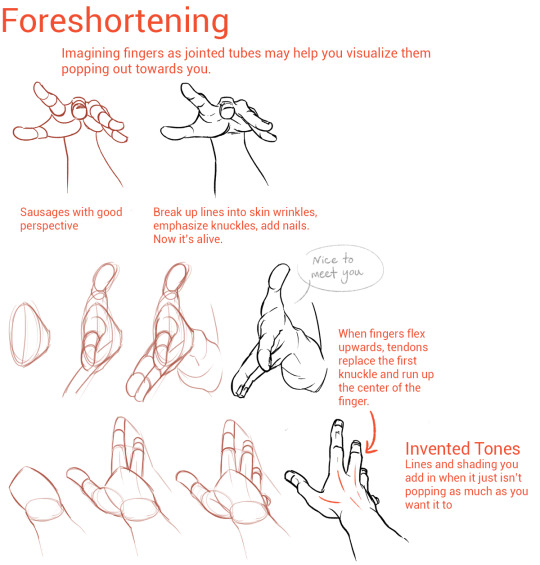

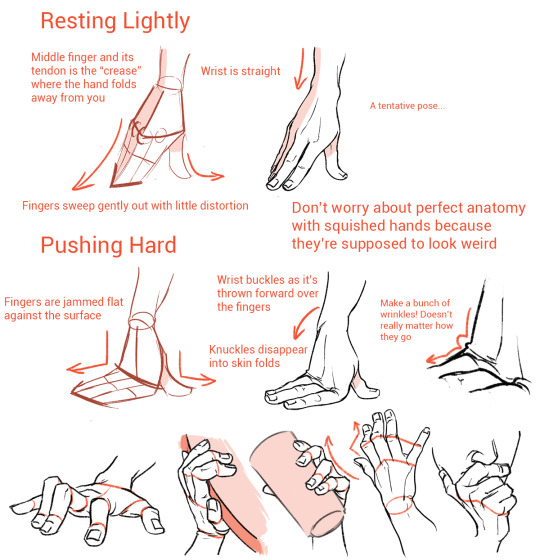
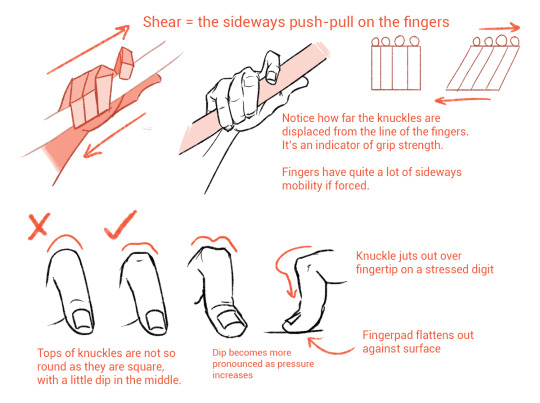
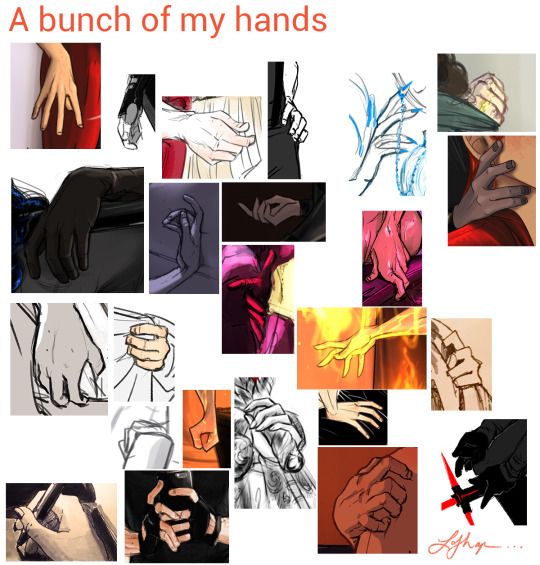
I’m not an expert but I like hands a lot so hopefully some of this was helpful!
224K notes
·
View notes
Text
Let's talk about character development.
Creating multidimensional characters make them more relatable to your readers. They add richness and complexity to the narrative, enhancing its overall depth and resonance.
So. How?
Complex Motivations: Characters should have motivations that go beyond simple desires or goals. Delve deep into their past experiences, fears, and desires to understand what truly drives them. Keep them consistent yet nuanced for realistic character growth and change throughout the story.
Flaws and Vulnerabilities: Avoid creating characters who are too perfect or flawless. Imperfections make characters relatable and interesting. Give them vulnerabilities, weaknesses, and struggles to overcome. This adds depth to their personalities and creates opportunities for character development.
Internal Conflict: Explore the internal conflicts within your characters. This could be moral dilemmas, inner turmoil, or conflicting emotions. Internal struggles can be just as compelling, if not more so, than external conflicts, and they add layers to your characters' development. (See my previous post about this!)
Consistent Behavior: Make sure to keep your characters' actions, reactions, and decisions consistent with their established personalities, backgrounds, and motivations. Inconsistencies can break the reader's immersion and credibility in the story. And the fandom will hunt you down mercilessly.
Unique Voice: Each character should have a distinct voice and mannerisms that reflect their personality, background, and worldview. Pay attention to the way they speak, their vocabulary, and their gestures. This will really help to bring your characters to life.
Dynamic Relationships: Develop dynamic relationships between your characters. Interactions with other characters should reveal new facets of their personalities and contribute to their growth or downfalls. Explore different types of relationships (friendships, romances, rivalries, family dynamics, etc.) to add depth to your characters' experiences.
Arc of Change: Consider how your characters evolve over the course of the story. What lessons do they learn? How do their experiences shape them? Every significant event should impact your characters in some way, leading to growth, transformation, or regression.
Happy writing ❤
2K notes
·
View notes
Text
emotional hands...
🕊️ from the reference archive on HATOKING.com 🕊️

HatoKing? More like Hand-o King, but not, like, because of hand jobs 'cause she makes tons of hand drawing reference material! (I use these all the time in my own drawing.)
Made by the guy who created Hatoful Boyfriend, the pigeon dating sim. (The bio is in Japanese so I'm unclear on whether they made it are just a huge fan.)*
*edit to add: confirmed by @fluffyheretic: HatoMoa is the creator of Hatoful Boyfriend (a lady-king and I should have referred to as "she")
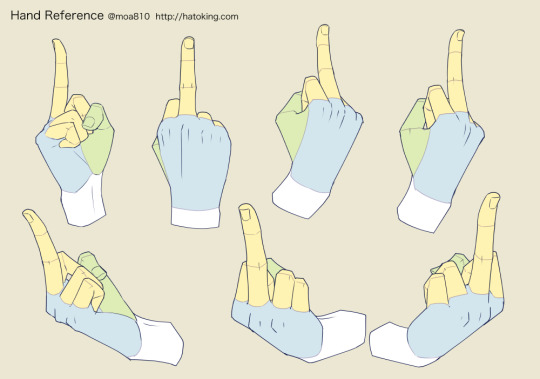
how rude...
↓ more 🕊️HATOKING🕊️ reference for hands ↓




just a few arbitrarily chosen examples— GO to the original site!
🕊️ALL HAIL the HATOKING🕊️
Pigeon King of Drawn Hand Gestures!
1K notes
·
View notes
Text
I just discovered foodtimeline.org, which is exactly what it sounds like: centuries worth of information about FOOD. If you are writing something historical and you want a starting point for figuring out what people should be eating, this might be a good place?
198K notes
·
View notes
Text
Character Traits & Quirks (For Writers)
Peace and blessings upon everyone!
I hope life's treating you well. I’m Esmeray and I welcome you to this post on my blog Dear Esmeray.
Ever wondered what makes your OC truly unforgettable? I believe it is the character traits. Character traits are what bring a character to life, or else you just have a flat, one-dimensional everyman as your OC.
So today I'll be sharing with you a list of character traits that I compiled to help you develop better OCs.
Positive Traits:
Agreeable
Brave
Caring
Cheerful
Confident
Cooperative
Creative
Dedicated
Devotion
Diligent
Disciplined
Dutiful
Easygoing
Efficient
Fairness
Forgiveness
Friendly
Funny
Generous
Hard-Working
Honest
Honorable
Humble
Kind
Leadership
Love of learning
Loyal
Passionate
Persuasive
Prudent
Principled
Punctual
Reasonable
Reliable
Respectful
Responsible
Self-regulation
Social Intelligence
Supportive
Trust-worthy
Well-mannered
Witty
Wise
Neutral Traits & Quirks:
Raises Eyebrows
Blinks rapidly
Avoids eye contact
Maintains eye contact
Blinks rapidly
Slouches
Stares off into the distance
Shrugs often
Touches their scars or wounds often
Chews lips
Paces around
Smiles a lot
Rarely smiles
Gestures with hands while speaking
Often is distracted
Hums
Negative Traits:
Absentminded
Abusive
Acts superior
Alcoholic
Aggressive
Always plays the victim
Aimless
Apathetic
Arrogant
Argumentive
Avoids their problems
Bossy
Blunt
Boring
Careless
Can't take criticism
Can't take a joke
Clumsy
Conceited
Controlling
Cunning
Childish
Cruel
Deceptive
Defiant
Demanding
Disloyal
Dishonest
Dramatic
Dependent
Disorganized
Disrespectful
Distracted easy
Extravagant
Envious
Forgetful
Greedy
Holds grudges
Makes up excuses for everything
Has a reason for why nothing is ever their fault
No accountability
Hostile
Hypopocrite
Immature
Impatient
Impractical
Impressionable
Impulsive
Insensitive
Irresponsible
Not a team player
Incompetent
Irritable
Inconsiderate
Indulgent
Insecure
Jealous
Know-It-All
Lazy
Liar
Loud
Manipulative
Makes everything about them
Makes everything a joke
Their way or the highway
Mean
Meddlesome
Messy
Naive
Nosy
Obnoxious
Obbssesive
Offended easily
Overdramatic
Overreacts
Patronizing
Power-hungry
Pretentious
Rebellious
Reckless
Rude
Sarcastic
Selfish
Sensitive
Stingy
Sexist
Spoiled
Stubborn
Superstitious
Talks over others/interrupts
Too loyal
Too forgiving
Undependable
Unreliable
Unsympathetic
Unorganized
Unreasonable
Violent
Weak
Remember, there are no one-dimensional characters in real life, and there shouldn't be in your stories either. The possibilities for your characters are endless – so get creative and have fun writing!
With Love,
Esmeray ♡
1K notes
·
View notes
Text

Vocabulary List for Fight Scenes
Combat Actions
Hoist
Dart/Dash
Deflect
Shield
Sidestep
Snatch up
Stalk
Stamp/stomp
Stretch
Stride
Wagger
Oust
Leap
Lose ground
Mimick
Mirror
Negate
Overpower
Parry
Rear to full height
Resurgate
Suanter
Seize
Take cover
Throttle
Twirl
Unleash
Withdraw
Entwine
Flee
Gain ground
Grasp
Cling to
Breach
Duck
Dodge
Hits
Amputate
Bloody
Carbe
Castrate
Collision
Connect
Crush
Defenestrate
Destroy
Disfigure
Dismember
Dissever
Grind
Maul
Perforate
Rend
Riddle with holes
Saw
Smack
Splatter
Sunder
Torn Asunder
Traumatize
Whack
Writhe
Gut
Hammer
Maim
Mangle
Plow
Puncture
Melee
Assault
Attack
Barrage
Bash
Belebor
Bludgeon
Carve
Chop
Cleave
Clio
Club
Crosscut
Dice
DIg
Gore
Hack
Impale
Jab
Kick
Knock
Onsalught
Pierce
Plnt
Punch
Rive
Shove
Skewer
Slice
Smash
Stab
Strike
Sweep
Swipe
Swing
Transfix
Thrust
Visual Flair
Agony
Asphyxiate
Chock
Cough up bile
Cut to ribbons
Flop limply
Fractue
Freckled with blood
Gouts of blood
Grimane
Hemorrhage
Hiccup blood
Imprint
Indent
Resounding
Retch
Rip
rupture
Shiny with gore
Spew
Splash
Slumped in despair
Splatter
Split
Tear
Topple
Void
Vomit
Wedge
With a fell gaze
With a fiendish grin
With blank surprise
Audible Flair
Bang
Barking
Bong
Boom
Crack
Cackle
Clang
Clash
Crash
Cry
Echo
Elicit a curse
Frunt
Hiss
Howel
Hum
Moan
Muttering
Whoosh
Whistle
Whizz
With a keening cry
Thud
Thunk
Thawk
Splat
Snarl
Swoosh
Squeal
Sing
Sickening Pop
Silintly
Shriek
Shout
Snap
Thundering
Effects
Blind
Burn
Cause frostbite
Cauterize
Concussion
Combust
Daze
Dazzle
Deafen
Disintegrate
Electrocute
Freeze
Fuse flesh
Immobilze
Incinerate
Melt
Pralyse
Petrify
Purbind
Radiate
Reduced to
Shock
Sightless
Stun
Transiluminate
Death Blows
Annihilate
Behead
Decapitate
Disembowel
Eviscerate
Extirpate
Murder
Obliterate
Raze
Exterminate
6K notes
·
View notes
Text
Crafting Compelling Morally Gray Characters: A Guide for Fiction Writers

In literature, there is often a clear distinction between good and evil. Heroes are portrayed as virtuous and villains as wicked. However, in recent years, there has been a rise in the popularity of morally gray characters - those who do not fit neatly into the categories of good or evil. These characters are complex, flawed, and often make decisions that challenge the reader's moral compass. In this guide, I'll help you explore the art of crafting compelling morally gray characters and how to make them stand out in your fiction writing.

What Are Morally Gray Characters?
Morally gray characters, also known as morally ambiguous characters, are those who do not conform to traditional notions of good or evil. They may have both positive and negative traits, and their actions may be motivated by a mix of good and bad intentions. These characters often blur the lines between right and wrong, making them more relatable and intriguing to readers.
Examples of Morally Gray Characters
Some well-known examples of morally gray characters include:
Severus Snape from the Harry Potter series: Initially portrayed as a villain, Snape's true motivations and actions are revealed to be more complex and morally ambiguous.
Jaime Lannister from A Song of Ice and Fire series: Known for his arrogance and incestuous relationship with his sister, Jaime's character evolves throughout the series, showcasing his internal struggle between his duty and his personal desires.
Walter White from Breaking Bad: A high school chemistry teacher turned methamphetamine producer, Walter's character is constantly torn between his desire for power and his moral compass.
Why Are Morally Gray Characters Compelling?
Morally gray characters are compelling because they challenge the reader's perceptions of right and wrong. They are not easily categorized as heroes or villains, making them more relatable and human. These characters also add depth and complexity to a story, making it more interesting and thought-provoking.
The Power of Relatability
One of the main reasons morally gray characters are so compelling is because they are relatable. They are not perfect, and they make mistakes, just like real people. This makes them more human and allows readers to connect with them on a deeper level. When readers can see themselves in a character, it creates a stronger emotional connection to the story.
The Element of Surprise
Morally gray characters also add an element of surprise to a story. Their actions and decisions may not always align with what the reader expects, keeping them on the edge of their seat. This unpredictability makes the story more engaging and can lead to unexpected plot twists.
The Exploration of Morality
Morally gray characters also allow for a deeper exploration of morality in a story. By challenging traditional notions of good and evil, these characters force readers to question their own moral compass and consider the gray areas of morality. This can lead to thought-provoking discussions and a deeper understanding of complex moral issues.
How to Craft Morally Gray Characters
Crafting morally gray characters requires a delicate balance of positive and negative traits, as well as a deep understanding of their motivations and internal struggles. Here are some tips for creating compelling morally gray characters in your writing.
Give Them a Strong Motivation
Every character, regardless of their moral alignment, should have a strong motivation for their actions. For morally gray characters, this motivation should be complex and not easily defined as purely good or evil. It could be a desire for power, revenge, or even a sense of duty. This motivation will drive their decisions and actions throughout the story.
Show Their Flaws and Vulnerabilities
Morally gray characters are not perfect, and they should not be portrayed as such. They should have flaws and vulnerabilities that make them more relatable and human. These flaws could be physical, emotional, or moral, and they should play a role in the character's development and decisions.
Create Internal Conflict
One of the defining characteristics of morally gray characters is their internal conflict. They are torn between their good and bad tendencies, and this struggle should be evident in their thoughts and actions. This internal conflict adds depth to the character and makes them more relatable to readers.
Avoid Stereotypes
When crafting morally gray characters, it's important to avoid falling into stereotypes. These characters should not be one-dimensional or defined solely by their moral ambiguity. They should have unique personalities, backgrounds, and motivations that make them stand out as individuals.
Show Their Growth and Development
As with any well-written character, morally gray characters should experience growth and development throughout the story. They should learn from their mistakes and make decisions that challenge their moral compass. This growth and development will make them more dynamic and interesting to readers.
How to Make Morally Gray Characters Stand Out
With the rise in popularity of morally gray characters, it's important to make yours stand out in a sea of similar characters. Here are some tips for making your morally gray characters unique and memorable.
Give Them a Distinctive Voice
A character's voice is an essential part of their identity. It should be unique and reflective of their personality and motivations. For morally gray characters, their voice should reflect their internal conflict and the complexity of their moral alignment.
Create a Strong Backstory
A character's backstory can provide valuable insight into their motivations and actions. For morally gray characters, a strong backstory can help explain their moral ambiguity and add depth to their character. It can also create empathy and understanding for their decisions.
Use Foils to Highlight Their Morality
Foils are characters who contrast with the main character, highlighting their strengths and weaknesses. For morally gray characters, foils can be used to showcase their moral ambiguity and challenge their beliefs. This can add depth to the character and create interesting dynamics between them and other characters.

Morally gray characters add depth, complexity, and relatability to a story. By challenging traditional notions of good and evil, these characters force readers to question their own moral compass and consider the gray areas of morality.
1K notes
·
View notes
Text
Want quick tips to add instant chemistry to the relationships of your characters??
(🥳With examples🥳)
First of all, I want to say that you can also use most of them for platonic/ non-romantic relationships, so feel free to use this tips however you think they might work better in your story. So, without further adue, let's get to the tips!!!
Make your characters LISTEN to each other. Like, if A tells B they're not a morning person, B could make some coffee for A or lower the volume of their alarm.
This might sound quite obvious, but show that you characters care for each other. It might be as simple as one of them giving the other a glass of water when they feel a little dizzy, but it works wonders!
Make your characters physically close. When you are emotionally close to someone, you tend to be physically close too. But here is the thing. Make your characters react like it's second nature: "how would I not hug B when I haven't seen them in days?" or "Of course I'm gonna take A's hand when I feel insecure".
They don't have to be constantly thinking about each other, but when they do, MAKE IT MATTER!! For example, character A is out shopping, and they see B's favorite cookies. B didn't have a good day, and A knows that. But A also knows B is gonna fucking love the cookies, so they buy some.
Let them believe and trust each other. Also applies if one of them is a little distrustful: let your characters rely on one another, even if at the start they aren't as comfortable doing it. For a distrustful character, letting the other one help with chores might be a HUGE thing.
Other tips for writers: previous | next
3K notes
·
View notes
Text
Foreshadowing Ideas
• Character themes/motifs. I’ve heard of one writer who tries to give each character their own theme for similes, metaphors, descriptions, etc so there’s like a theme to the way they’re portrayed. You could use that to foreshadow notable secrets about the character that will later be revealed, or if at any point they’re disguised then you can use that to tip off the reader that they have the same motifs and so might be related/the same person
• Tiny details hidden in lists. Say the MC was trying to work out the identity of a bad guy, who we know was wearing a red shirt on the day of a big bad event. A few chapters later, MC is checking around their best friend’s room to find them, with the place its usual mess with discarded takeaway boxes, the bed unmade, a red shirt left on the floor that could use a good sweep. The red shirt might not click with all the readers, but those who register it upon their first read will eat it up
• Inconsistent behavioural patterns. Once we have a good idea of what a character is like, having them act out of character can set off alarm bells and make us question what’s occurred to make them act this way. Let the other characters register it too, if it’s reasonable that they would, but let them ultimately brush it off quite quickly to keep it subtle. Or just call it right out, whichever you prefer
• Unreliable narrators. Let one character say one thing and a second character say another, even if they both ultimately agree on the same thing but get one or two small details wrong. Ideally do this two or three times in order for the reader to know it’s not just a mistake in the plot but an intentional inconsistency, but even if it’s only done once and it’s taken as a mistake it’ll still slot together like puzzle pieces in the end and they’ll be kicking themself for dismissing it
• In-universe red herrings. If you’re going to add red herrings as foreshadowing, it’s helpful if the red herring aligns with the intentions of someone person aware of the upcoming plot twist who’s trying to control the narrative. Say the plot twist was the reveal of a mysterious character’s identity to be the best friend of the MC, the best friend might have deliberately thrown the MC off their scent by planting suspicions in the MC’s mind that a different character was the mysterious character’s identity all along. This is less about foreshadowing the actual reveal, of course, but rereads will be a punch to the gut when everyone realises that all this misinformation and red herring business came from someone trying to cover their own ass rather than coming from misunderstandings or multiple other random sources
3K notes
·
View notes
